Interested to know what the score is for turkey? Let’s dive in more for this Spring turkey season! To be successful in measurement for turkeys, you need to understand the scoring system for turkeys. Having good knowledge of how to score a turkey will be one of the things that makes your hunting experience something more than just a regular hunting experience.
Get along as we go into detail on all aspects of turkey scoring, including the beginner’s guides and expert advice. Get ready to uncover the mystery behind this important part of hunting.
Why Measuring Turkey Is Important?
Measuring turkey is important for a few reasons:
- Keep Record: Hunters can keep track of their personal accomplishments by keeping score records of the turkeys they hunt. This provides a solid way to represent hunters’ successes and skills. A system for scoring allows hunters to evaluate their catches when hunting on multiple occasions or in different seasons.
- Manage Conservation: The scoring system can offer crucial information for conservation efforts from the perspective of wildlife management. Information gathered from scoring can provide insights into the health, growth, and actions of turkey populations. This data could benefit wildlife conservationists and organizations in managing turkey populations and setting up hunting regulations.
- Compare and Compete: Scoring a turkey can also be used to compare various hunters. It is a fair and reliable way to evaluate the effectiveness of the hunt, especially in competitive scenarios. Certain hunters may aim to see their turkey acknowledged in a record book following a highly successful hunt.
- EnsureProper Cooking: Through sizing, the turkey, you can estimate how much time is required for it to cook in the best way possible and calculate the exact amount of seasoning and stuffing you need to prepare a moist and tasty feast. This is to avoid the case where the turkey ends up being undercooked or overcooked.
- Serving Size: The weighing of the turkey can give you an idea of how many servings you can derive from it, which is crucial when it comes to planning the holiday meal and making sure that no one is left with nothing to eat.
What Is a Good Turkey Score?
A “good” turkey score depends on what you mean by “good.” Here’s a breakdown:
Here‘s a general idea:
- Scores above 80 are considered excellent.
- Scores in the 60s and 70s are still very respectable.
- Anything below 60 can still be a mature bird, but wouldn’t be considered exceptional size by NWTF standards.
Dimension Measurements
The dimensions considered for a good turkey score are all based on the National Wild Turkey Federation (NWTF) method, which is the most common system used. Here’s what they measure:
- Weight: This is recorded in pounds and ounces, with the weight itself contributing directly to the final score.
- Beard Length: Measured in inches to the nearest 1/16th, then multiplied by two. Longer beards indicate an older, more mature bird.
- Spur Length: Measured in inches to the nearest 1/16th, then multiplied by ten (for each spur). Spurs are the sharp bony growths on the legs of male turkeys
Score Of The Biggest World Record Turkey
Justin Lucas from Georgia, USA, holds the world record for the highest-scoring turkey(total score of 203.9375).
In Candler, Georgia, he captured a bird that set a record in 2014. The bird possessed 10 beards, with the lengthiest one being 10.5 inches long. The spurs were 1.1875 inches long, and the tom’s weight was 19.0625 pounds.
How To Score A Turkey?
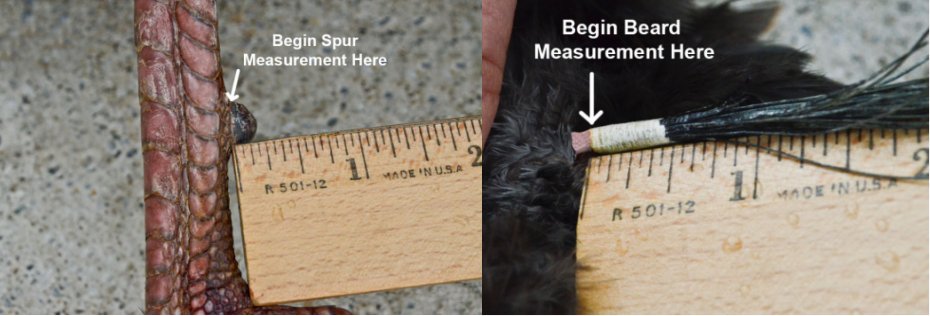
Scoring a turkey involves taking measurements of its weight, beard length, and spur length, and then adding them together with a point system. Here’s how to do it:
- Weight: Weigh the turkey on a scale to the nearest ounce and convert the ounces to decimals.
- Beard Length: Measure the beard from the skin to the tip of the longest whisker to the nearest 1/16th of an inch and convert it to a decimal. If there are multiple beards, measure each one and add the lengths together before converting to a decimal.
- Spur Length: Measure the spur on each leg, from the base to the tip to the nearest 1/16th of an inch, and convert both measurements to decimals. Add the two spur lengths together.
Once you have all the decimals, simply add them together. The weight is counted as one point per pound, while the beard length is multiplied by two and the total spur length is multiplied by ten.
For example, a turkey that weighs 21.4 pounds, has a 10.5-inch beard, and spurs that measure 1.25 inches each would score:
Weight: 21.4 points
Beard: (10.5 inches * 2) = 21 points
Spurs: (1.25 inches + 1.25 inches) * 10 = 25 points
Total Score: 21.4 + 21 + 25 = 67.4 points
Important Things to Know When Scoring Turkey
Here are some important things to know when measuring a turkey for scoring:
1. Accuracy
Using the right tool can help measure the turkey accurately. Choose a scale that will allow you to measure weight to at the least the nearest one-tenth of a pound. A digital scale is the best option for precise measurement.
The maximum accuracy in your beard length can be achieved while using a ruler with a slope of sixteenth-inch markings. Furthermore, use a ruler with sixteen inches for a spur.
2. Freshness
It would be best to measure the turkey once at the time of butchering. By doing so, it keeps the weight accurate and stops the product from shrinking.
3. Multiple Beards
If more than one beard is involved, the length of each should be measured separately and then the resulting sum should be found and converted to a decimal.
4. Spur Measurements
Mark out the length of the foot along the leg from the base where the foot bone joins to the tip. Make sure you measure a straight line from base to tip without any bend.
5. Documentation
Take pictures of the turkey using a camera, focusing on the beard and spurs as well as measurement tools for proofing purposes. This is also important for such activities as verification or keeping records.
Conclusion
In conclusion, scoring a turkey goes beyond simply hanging a number on it. It’s a way to appreciate the maturity and trophy quality of the bird.
By following the NWTF guidelines and using accurate measuring tools, you can properly assess your turkey and potentially add it to the record books.
Remember, documentation through pictures is important for verification purposes. So, grab your scale, ruler, and camera, and get ready to score your next hunt!


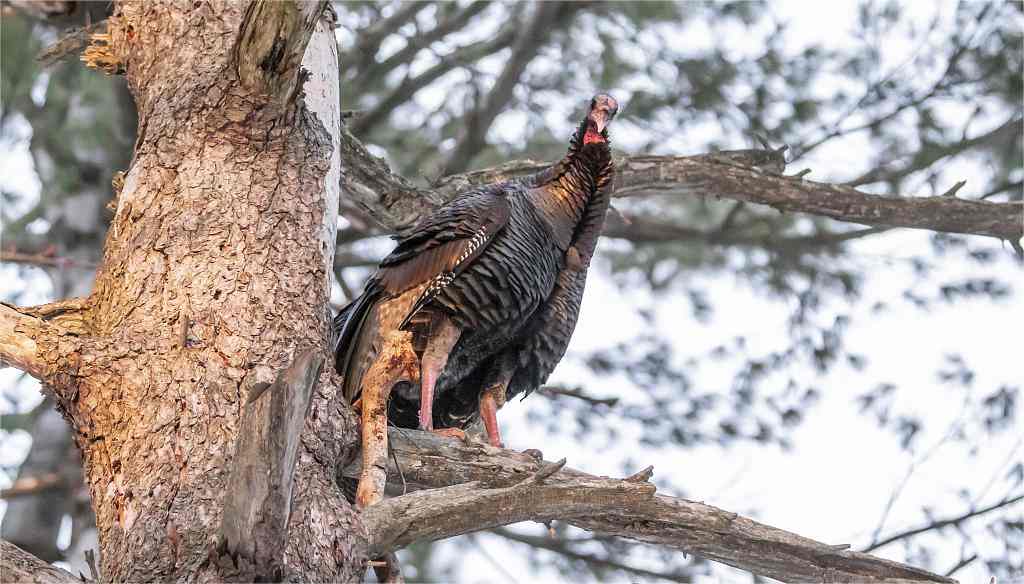






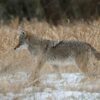

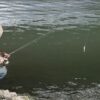
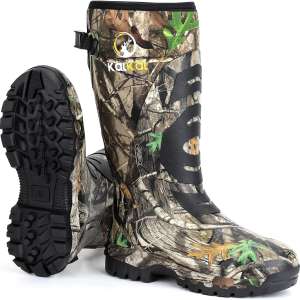

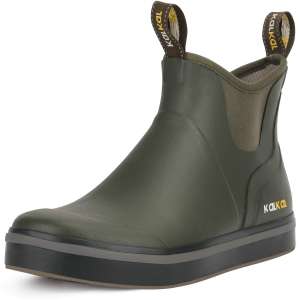

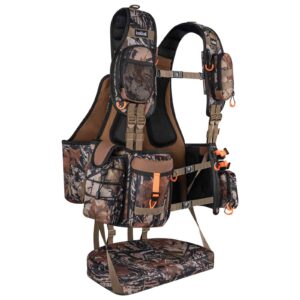


Leave a reply